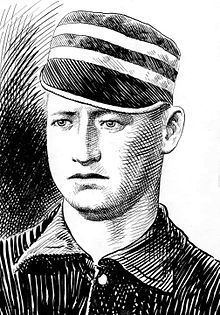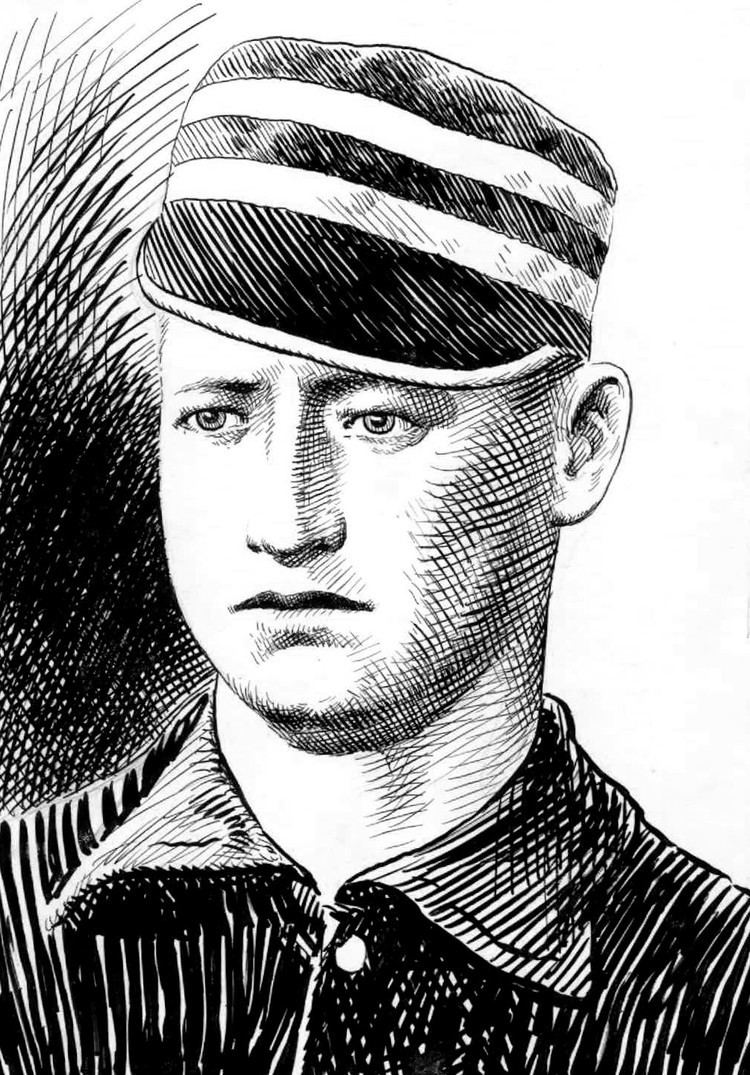Win–loss record 113–124 Role Baseball player Name Toad Ramsey | Strikeouts 1,515 Earned run average 3.29 | |
 | ||
Died March 27, 1906, Indianapolis, Indiana, United States | ||
Thomas H. "Toad" Ramsey (August 8, 1864 – March 27, 1906) was an American Major League Baseball player who pitched in the Majors from 1885 to 1890. Ramsey spent his entire career in the American Association, split between two different teams. He played for the Louisville Colonels, and later, the St. Louis Browns. He is sometimes credited as the inventor of the knuckleball pitch, and was one of the top pitchers in the Association for more than two years, with statistics that put him in the top five in multiple pitching categories.
Contents

Louisville
Born in Indianapolis, Indiana, and a former bricklayer, Ramsey is credited as the inventor of the knuckleball pitch. He had severed the tendon in the index finger of his pitching hand with a trowel. The result was that Ramsey's pitches had a natural knuckleball motion. He threw with a fastball motion, holding the ball with his index finger retracted, since he could not straighten it, and with just his finger tip on the ball. Some historians have disputed that he threw a knuckleball in the modern sense, in that his ball movement was like what is now known as knuckle curve. He was playing for the Chattanooga, Tennessee team of the Southern League, when he was traded to Louisville Colonels of the American Association in exchange for John Connor and $750 on August 29, 1885. He was brought in to spell star pitcher Guy Hecker, who had a sore arm, and made his Major League debut on September 5, in a complete game 4-3 loss to the St. Louis Browns. In that first season with the Colonels, he started nine games, completing them all with a 3-6 win-loss record.
For the 1886 season, his first full season in the Majors, Ramsey became the number one starting pitcher for the Colonels, sharing starts with Hecker. Ramsey logged in a league leading 588.2 innings and 66 complete games in 67 starts. In addition to his league leading statistics that season, his ERA of 2.45, and 38 wins were good for third in the league. His 499 strikeouts that season finished second behind Matt Kilroy's record setting total of 513. Ramsey's total is the second highest total in major league history. Ramsey and Hecker's relationship steadily became more at odds the more the Ramsey's status with the team grew. At one point, Ramsey said that Hecker was jealous of his success and it would be good for the team if Hecker were released.
Ramsey had a similar 1887 season, pitching 561 innings and winning 37 games. His 355 strikeouts led the American Association, while his 561 innings pitched, 64 games started, and 61 complete games, were all second in the league to Kilroy. Unfortunately, his dominant years stopped after that season, and his fortunes changed for the worse beginning during the 1888 season. His win–loss record was 8–30 in 40 starts. On July 25, 1888, Ramsey was arrested for not paying an overdue bar bill.
St. Louis
His 1889 season began the way his 1888 season went, winning one game in his 18 starts with Louisville. On July 17, he was traded to the St. Louis Browns for Nat Hudson. He pitched in just five games the rest of season, but did go 3–1 and had an ERA of 3.95. He returned with St. Louis for the 1890 season, and pitched his last season in the Majors. He had a record of 24–17, struck out 257 batters, and had an ERA of 3.69 in 348⅔ innings pitched. Ramsey was released by St. Louis on September 19, 1890, and he never returned to the Majors.
Post-career
Ramsey died of pneumonia in his hometown of Indianapolis at the age of 41, and is interred at Crown Hill Cemetery.
